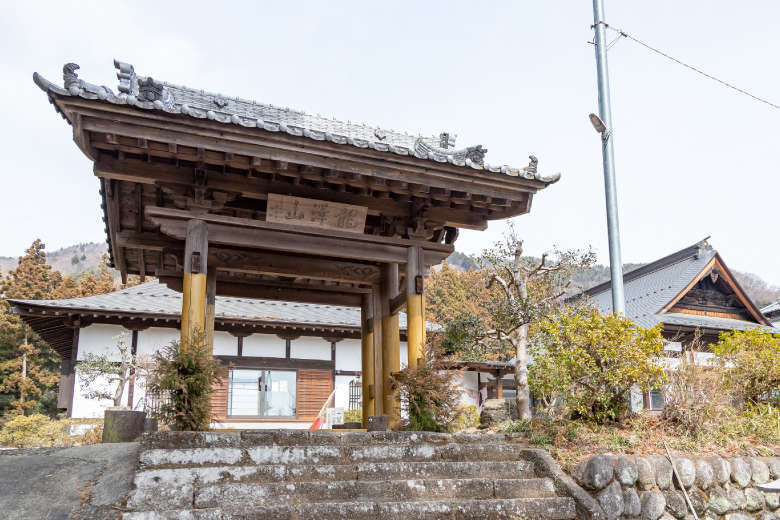Hosho-ji Temple was built in 1618 as a branch of Chosho-ji Temple in Shimoya, Tsuru City, and flourished as a temple in Inume-shuku.
It is said that Mount Fuji in Katsushika Hokusai’s Thirty-six Views of Mount Fuji as well as Utagawa Hiroshige’s Thirty-six Views of Mount Fuji were all drawn from around this temple. A stone statue standing more than 7 m tall and a statue of Jibo Kannon (affectionate mother kannon, or the Buddhist deity of compassion) are in the precincts, and 20 wood statues of the Buddhist deity of compassion standing 1.2 m in height are in the main hall. The temple is decorated with beautiful hydrangea flowers in summer and crimson foliage in autumn.
This temple is the sixth sacred place of the 88 pilgrimage sites in the Kai Region, and the 23rd sacred place of 33 pilgrimage sites in the Gunnai Region. It was once in Inume-shuku. However, it was combined with Muryo-ji Temple after it was closed. The temple also care for Hakuba Fudoson (a Buddhist deity called Hakuba).
It is said that Mount Fuji in Katsushika Hokusai’s Thirty-six Views of Mount Fuji as well as Utagawa Hiroshige’s Thirty-six Views of Mount Fuji were all drawn from around this temple. A stone statue standing more than 7 m tall and a statue of Jibo Kannon (affectionate mother kannon, or the Buddhist deity of compassion) are in the precincts, and 20 wood statues of the Buddhist deity of compassion standing 1.2 m in height are in the main hall. The temple is decorated with beautiful hydrangea flowers in summer and crimson foliage in autumn.
This temple is the sixth sacred place of the 88 pilgrimage sites in the Kai Region, and the 23rd sacred place of 33 pilgrimage sites in the Gunnai Region. It was once in Inume-shuku. However, it was combined with Muryo-ji Temple after it was closed. The temple also care for Hakuba Fudoson (a Buddhist deity called Hakuba).
